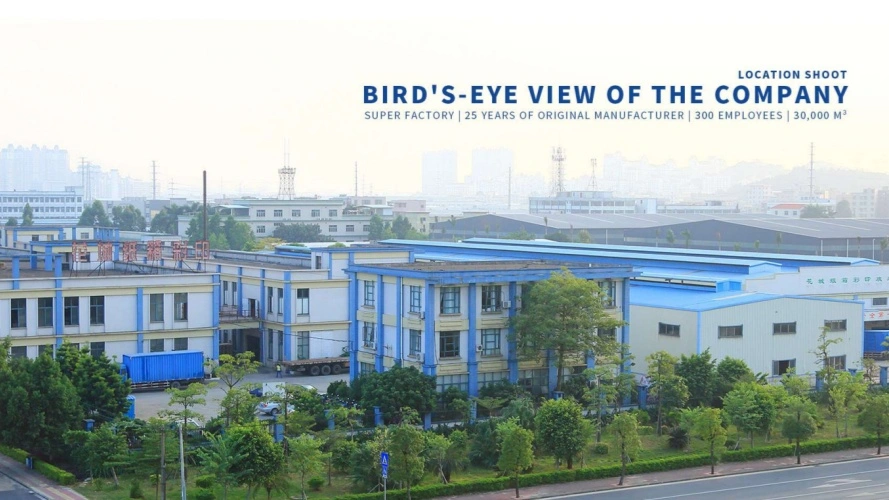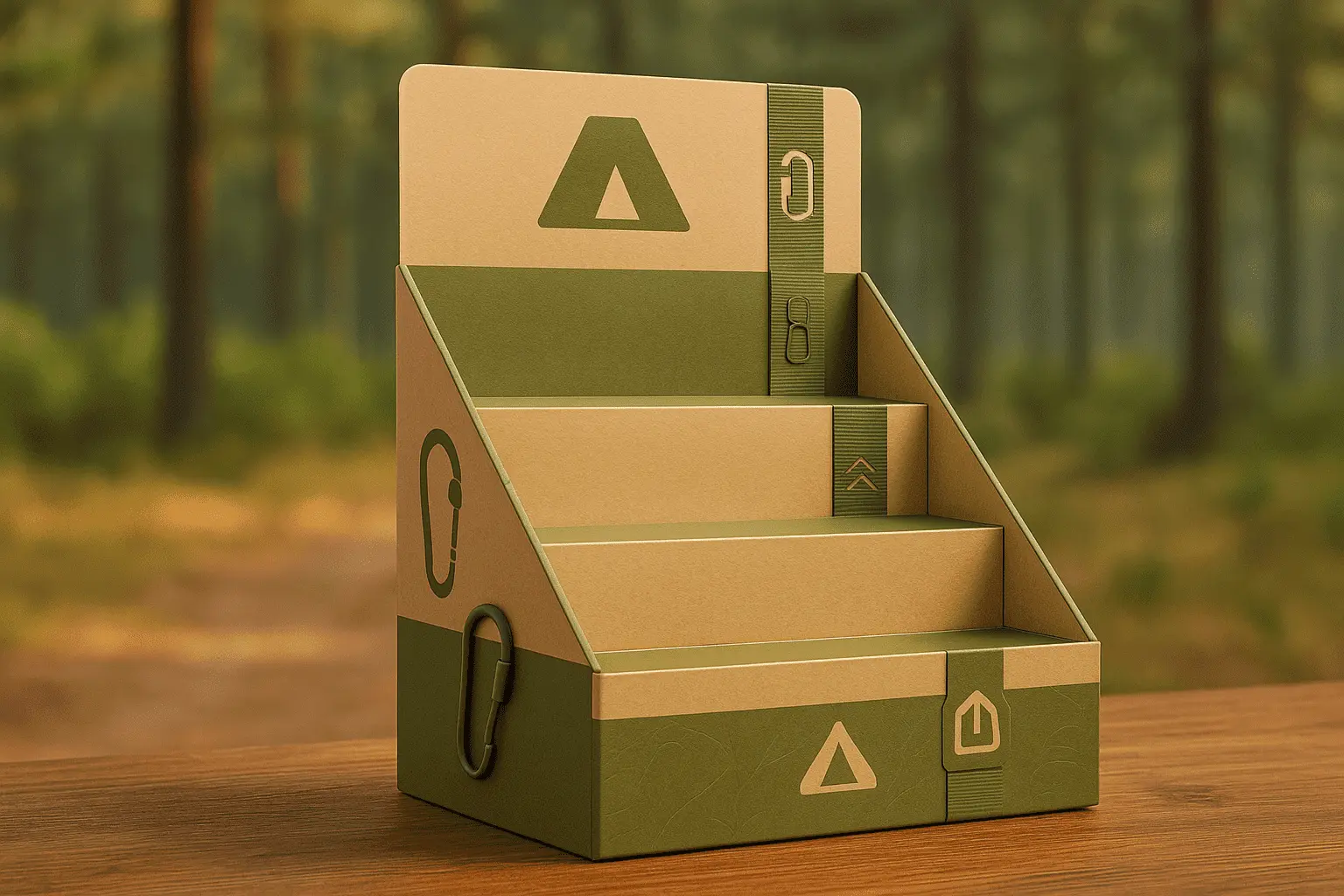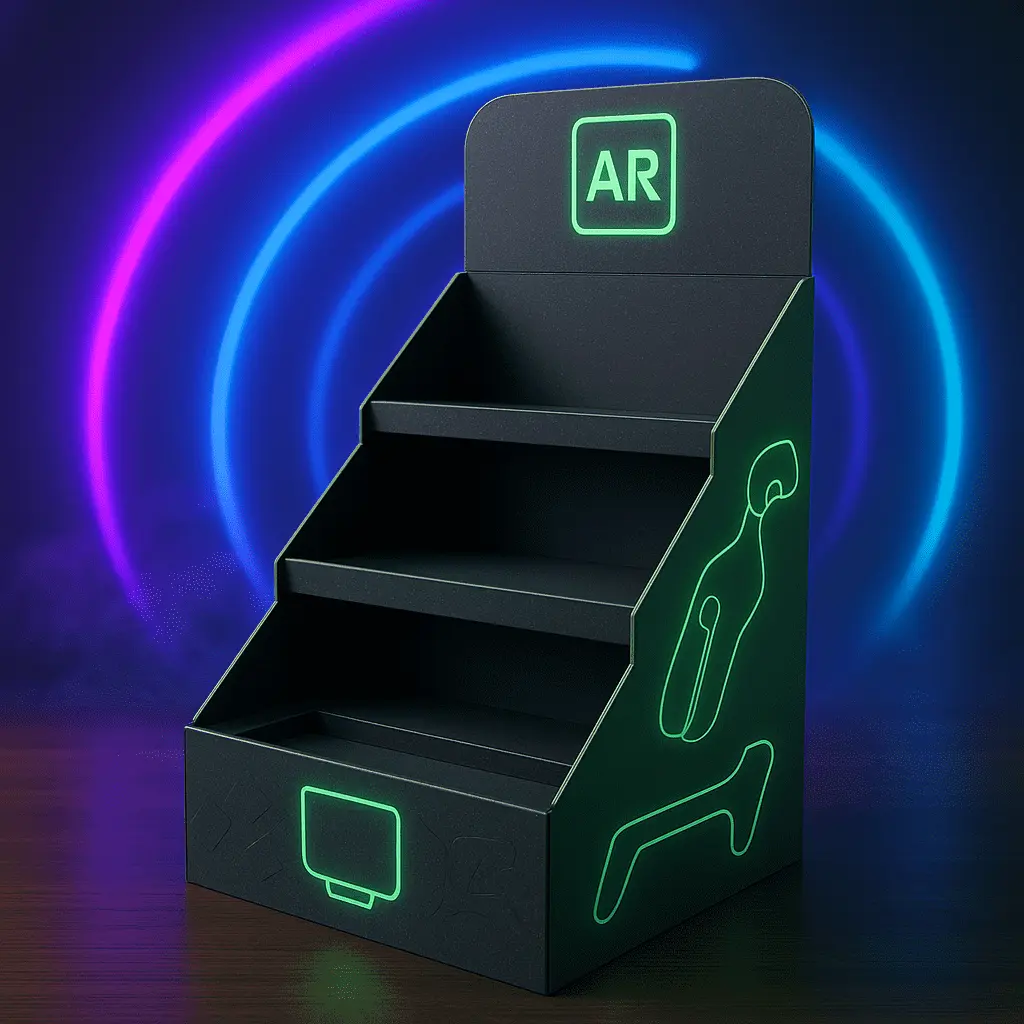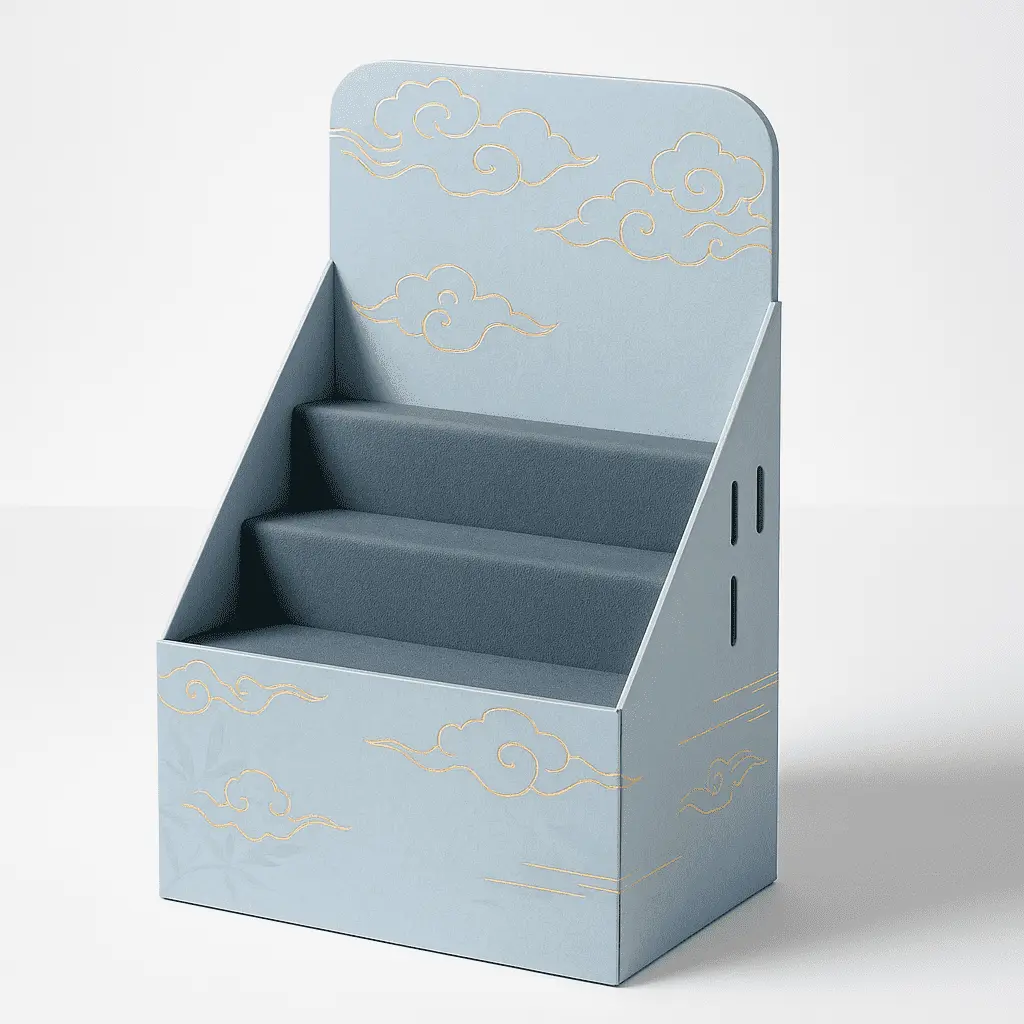What is a PDQ Pallet Display?
A PDQ pallet display, short for "Pretty Darn Quick" or "Product Display Quick," is a versatile and efficient point-of-purchase marketing tool designed to showcase products in retail environments. These displays are typically made from corrugated cardboard or other lightweight materials and are pre-packed with merchandise, allowing for swift and effortless setup on the sales floor. PDQ pallet displays are engineered to capture consumers' attention, enhance product visibility, and boost impulse purchases. Their modular design enables easy transportation and assembly, making them a popular choice for seasonal promotions, product launches, and high-traffic retail locations. By combining the convenience of a pallet with the allure of an eye-catching display, PDQ pallet displays offer an innovative solution for brands seeking to maximize their in-store presence and drive sales.

The Anatomy and Design of PDQ Pallet Displays
Structure and Components
PDQ pallet displays are meticulously crafted to optimize both functionality and visual appeal. The base of the display typically consists of a standard-sized pallet, which serves as a sturdy foundation for the entire structure. Atop this foundation, multiple tiers of shelving or compartments are strategically arranged to showcase products effectively. These tiers can be customized to accommodate various product sizes and shapes, ensuring versatility across different merchandise categories.
The vertical supports of the display often feature vibrant graphics and branding elements, transforming the structure into a powerful marketing tool. Header cards or signage at the top of the display further enhance visibility and communicate key product information or promotional messages. Some PDQ pallet displays also incorporate additional features such as literature holders, product samples, or interactive elements to engage customers and provide a more immersive shopping experience.
Materials and Durability
While corrugated cardboard remains a popular choice for PDQ pallet displays due to its cost-effectiveness and eco-friendly nature, manufacturers are increasingly exploring innovative materials to enhance durability and visual impact. High-quality plastics, wood composites, and even metal components are being integrated into display designs to create more robust and long-lasting structures.
The selection of materials often depends on factors such as the intended duration of the promotion, the weight of the products being displayed, and the environmental conditions of the retail space. For instance, displays destined for high-humidity environments may utilize moisture-resistant materials to maintain structural integrity. Additionally, advancements in printing technologies have enabled the production of displays with photorealistic graphics and textures, further elevating the visual appeal of PDQ pallet displays.
Customization and Branding Opportunities
One of the key advantages of PDQ pallet displays lies in their highly customizable nature. Brands can tailor every aspect of the display to align with their marketing objectives and visual identity. This includes not only the overall dimensions and layout but also intricate details such as color schemes, typography, and imagery.
Innovative design techniques, such as die-cutting and embossing, can be employed to create unique shapes and textures that make the display stand out in a crowded retail environment. Some manufacturers offer interactive elements like QR codes or augmented reality features, allowing brands to bridge the gap between physical and digital marketing strategies. The ability to fully customize PDQ pallet displays ensures that each brand can create a distinctive and memorable presence on the retail floor, effectively communicating their unique value proposition to potential customers.
Benefits and Applications of PDQ Pallet Displays in Retail
Enhancing Product Visibility and Accessibility
PDQ pallet displays excel at elevating product visibility within retail environments. By presenting merchandise at eye level and in an organized manner, these displays effectively capture consumer attention and facilitate easy product selection. The strategic arrangement of items on multiple tiers ensures that a wide range of products remains visible and accessible, even as inventory levels fluctuate throughout the day.
Moreover, the freestanding nature of PDQ pallet displays allows retailers to position them in high-traffic areas, such as aisle endcaps or near checkout counters. This flexibility in placement maximizes exposure to potential customers and can significantly increase the likelihood of impulse purchases. The clear organization and labeling typically featured on these displays also contribute to a more streamlined shopping experience, enabling customers to quickly locate and evaluate products of interest.
Streamlining Inventory Management and Restocking
From an operational standpoint, PDQ pallet displays offer substantial benefits in terms of inventory management and restocking efficiency. The pre-packed nature of these displays means that entire units can be swiftly deployed to the sales floor with minimal handling, reducing the time and labor required for setup. This feature is particularly advantageous during peak shopping periods or when implementing time-sensitive promotions.
Additionally, the modular design of PDQ pallet displays often allows for easy replenishment of individual product sections without disrupting the entire display. This targeted restocking approach helps maintain a consistently full and attractive presentation throughout the day. Some advanced PDQ pallet display designs even incorporate inventory tracking mechanisms or visual cues to alert staff when restocking is necessary, further optimizing the management of product stock levels.
Versatility Across Product Categories and Promotions
The adaptability of PDQ pallet displays makes them suitable for a wide array of product categories and promotional strategies. In the food and beverage industry, these displays can effectively showcase seasonal items, new flavor variations, or bundled product offerings. For personal care and cosmetics brands, PDQ pallet displays provide an ideal platform for introducing limited-edition collections or demonstrating product ranges.
In the realm of consumer electronics, these displays can be utilized to present accessories, showcase product features through interactive demos, or highlight compatible items. The versatility of PDQ pallet displays extends to promotional applications as well, serving as effective tools for cross-merchandising, loyalty program promotions, or charity initiatives. By adapting the design and content of the display to suit specific marketing objectives, brands can create targeted and impactful retail experiences that resonate with their target audience.
Future Trends and Innovations in PDQ Pallet Display Technology
Integration of Smart Technologies
The future of PDQ pallet displays is poised to embrace cutting-edge smart technologies, revolutionizing the way brands interact with consumers at the point of purchase. Emerging trends include the integration of digital screens and interactive touchpoints, allowing for dynamic content updates and personalized customer experiences. These smart displays can leverage data analytics to adapt product presentations based on real-time sales data, consumer demographics, or even weather conditions.
Additionally, the incorporation of near-field communication (NFC) and RFID technologies enables seamless integration with mobile devices, offering customers access to detailed product information, reviews, or exclusive promotional offers. Some forward-thinking manufacturers are exploring the potential of augmented reality (AR) integration, allowing shoppers to visualize products in use or explore additional features through their smartphones, further enhancing the engagement and informational value of PDQ pallet displays.
Sustainable Materials and Eco-Friendly Design
As environmental consciousness continues to grow among consumers and retailers alike, the development of sustainable PDQ pallet displays is becoming increasingly important. Innovators in the field are exploring the use of biodegradable materials, recycled content, and designs that facilitate easy disassembly and recycling at the end of a display's lifecycle. Some manufacturers are experimenting with alternative materials such as bamboo, mycelium-based composites, or advanced bioplastics that offer durability while minimizing environmental impact.
Furthermore, the concept of "circular design" is gaining traction, where PDQ pallet displays are created with the intention of being repurposed or upcycled after their initial use. This approach not only reduces waste but also presents opportunities for brands to engage in creative sustainability initiatives that resonate with eco-conscious consumers. As regulations around packaging and display materials become more stringent, these sustainable innovations are likely to become standard practice in the industry.
Enhanced Modularity and Customization
The future of PDQ pallet displays is set to offer unprecedented levels of modularity and customization, catering to the ever-changing needs of retailers and brands. Advanced manufacturing techniques, such as 3D printing and robotic assembly, are enabling the production of highly customized displays with shorter lead times and lower minimum order quantities. This flexibility allows brands to create unique, market-specific displays or rapidly prototype new designs for testing.
Moreover, the development of reconfigurable PDQ pallet display systems is gaining momentum. These innovative designs allow retailers to easily modify the layout, height, or product arrangement of displays without the need for complete replacement. Such adaptability ensures that displays remain fresh and relevant throughout extended promotional periods or can be quickly adjusted to accommodate changes in product lines or seasonal offerings. As the retail landscape continues to evolve, this enhanced modularity will play a crucial role in maximizing the longevity and effectiveness of PDQ pallet displays.
Conclusion
PDQ pallet displays have emerged as a pivotal tool in the modern retail landscape, offering a perfect blend of functionality, aesthetics, and marketing prowess. Their ability to enhance product visibility, streamline operations, and adapt to diverse promotional needs makes them an invaluable asset for brands seeking to make a lasting impression in competitive retail environments. As technology continues to advance and consumer expectations evolve, the future of PDQ pallet displays promises even greater innovation, sustainability, and customization. By staying attuned to these emerging trends and leveraging the full potential of PDQ pallet displays, brands can create compelling in-store experiences that drive engagement, boost sales, and foster lasting customer relationships.
Contact Us
Ready to elevate your brand's retail presence with cutting-edge PDQ pallet displays? Our team of expert designers and packaging engineers are here to bring your vision to life. Whether you're looking for sustainable solutions, smart technology integration, or highly customized designs, we have the expertise to create PDQ pallet displays that will make your products stand out on the retail floor. Contact us today at support@fetchingprinting.com to discuss your project and discover how we can help you maximize your in-store impact.
References
1. Smith, J. (2023). "The Evolution of Retail Displays: From Shelves to Smart PDQ Pallets." Journal of Retail Innovation, 15(2), 45-62.
2. Johnson, A., & Brown, L. (2022). "Sustainable Materials in Point-of-Purchase Displays: A Comprehensive Review." Green Packaging Quarterly, 8(4), 112-128.
3. Lee, S. (2023). "Consumer Engagement with Interactive Retail Displays: A Case Study Analysis." International Journal of Retail & Distribution Management, 51(3), 301-315.
4. Thompson, R. (2022). "The Impact of PDQ Pallet Displays on Impulse Purchasing Behavior." Retail Psychology Review, 19(1), 78-93.
5. Garcia, M., & Patel, K. (2023). "Innovations in Modular Display Design for Retail Environments." Journal of Visual Merchandising and Display, 12(2), 189-204.
6. Wilson, E. (2022). "The Role of Technology in Enhancing In-Store Product Presentations." Retail Technology Insights, 7(3), 55-70.




